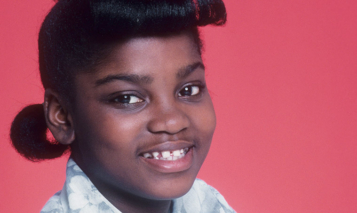
Breast cancer survivor Sheryl Crow was diagnosed with a benign brain tumor after experiencing memory problems.
Crow, 50, said she grew concerned when she forgot the lyrics to one of her songs onstage.
“I was worried about my memory so much that I went and got an MRI. And I found out I have a brain tumour,” Sheryl told Las Vegas Review-Journal.
The Grammy award winner, who was serenaded by Rihanna at a recent breast cancer benefit, told her audience “I’m 50, what can I say? My brain’s gone to s–t.”
Crow will not require surgery.
A benign tumor is a mass of tissue that lacks the ability to spread throughout the body (metastasize).
Brain cancer or brain tumor is an abnormal collection of cells that divides rapidly within the cranial cavity. Not all brain tumors are cancerous. Brain tumors can be benign (noncancerous) or malignant (cancerous growth which spreads rapidly).
Even though benign brain tumors are noncancerous they can still cause significant health problems depending on their size and location.
Metastatic brain cancer begins elsewhere in the body and spreads to the brain. A malignant primary brain tumor is a cancerous tumor which originates in the brain.
Brain cancer can form in the brain itself, in the lining of the brain (meninges) or in the spinal cord.
Cause of brain tumors
There is no known cause of brain tumors. But people who are exposed to radiation for prolonged periods of time are at higher risk for brain cancer. Also, the rate of brain cancer increases in people over 65.
Signs and symptoms
Don’t assume you have a brain tumor if you experience any of the above symptoms. They can be caused by other medical disorders. Always consult with your physician or go to the emergency room if you experience these signs and symptoms.
Diagnosis
Your doctor will ask you questions such as how long you have experienced these symptoms. He or she will take your family history. Then you will undergo a physical exam and a neurological exam. Depending on the results of those exams, your doctor will order diagnostic tests including a CT (CAT) scan or MRI to see images of your brain.
An Angiogram involves injecting dye into your blood vessels and taking X-rays of your brain to look for signs of blockage.
A spinal tap is performed under local anesthetic. The doctor uses a needle to withdraw cerebrospinal fluid (CSF) from your lower back. The spinal fluid is sent to a lab to test for cancer cells.
If a tumor is discovered in your brain, your doctor will take a biopsy of the tumor either during surgery or with a needle through a small hole drilled into your skull. The biopsy sample is sent to a lab to test for cancer cells.
Treatment
Surgery is the first option to remove the tumor. If the tumor can’t be removed due to its size or location, radiation therapy or chemotherapy are alternative options to shrink the tumor. If the tumor is removed successfully during surgery, your doctor may begin radiation or chemotherapy to kill the remaining cancer cells.
This has been your Medical Minute.
Info On the Web
Brain Tumor – Mayo Clinic
Brain Tumors (Benign and malignant) – WebMD
National Brain Tumor Society – Tumor.org
DISCLAIMER
Any medical information published on this blog is for your general information only and is not intended as a substitute for informed medical advice. You should not take any action before consulting with your personal physician or a health care provider. Sandrarose.com and its affiliates cannot be held liable for any damages incurred by following advice found on this blog.
More from Sandrarose.com:





